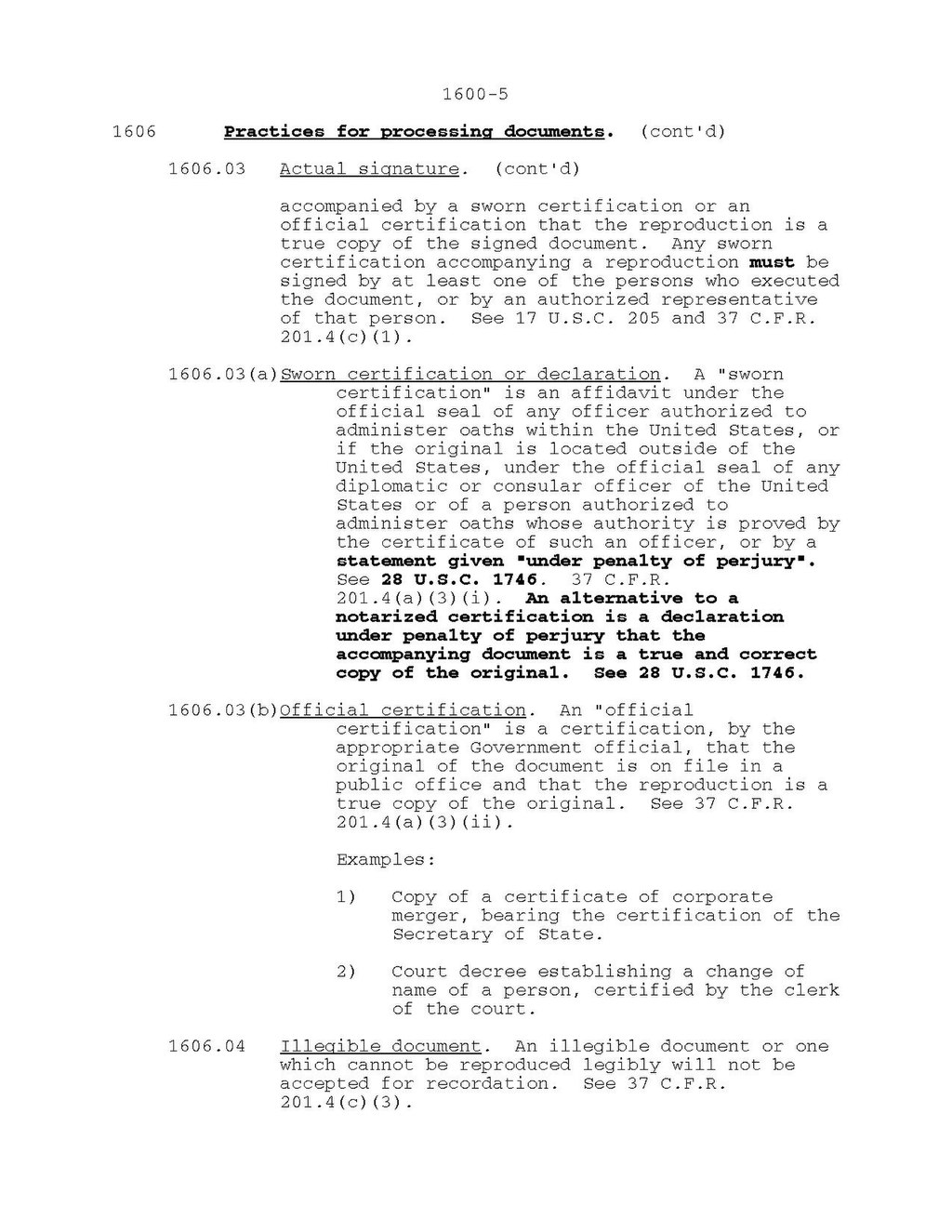1600-5
1606
Practices for processing documents. (cont'd)
1606.03
Actual signature. (cont'd)
accompanied by a sworn certification or an official certification that the reproduction is a true copy of the signed document. Any sworn certification accompanying a reproduction must be signed by at least one of the persons who executed the document, or by an authorized representative of that person. See 17 U.S.C. 205 and 37 C.F.R. 201.4(c)(1).
1606.03(a)
Sworn certification or declaration. A "sworn certification" is an affidavit under the official seal of any officer authorized to administer oaths within the United States, or if the original is located outside of the United States, under the official seal of any diplomatic or consular officer of the United States or of a person authorized to administer oaths whose authority is proved by the certificate of such an officer, or by a statement given "under penalty of perjury". See 28 U.S.C. 1746. 37 C.F.R. 201.4(a)(3)(i). An alternative to a notarized certification is a declaration under penalty of perjury that the accompanying document is a true and correct copy of the original. See 28 U.S.C. 1746.
1606.03(b)
Official certification. An "official certification" is a certification, by the appropriate Government official, that the original of the document is on file in a public office and that the reproduction is a true copy of the original. See 37 C.F.R. 201.4(a)(3)(ii).
Examples:
1)
Copy of a certificate of corporate merger, bearing the certification of the Secretary of State.
2)
Court decree establishing a change of name of a person, certified by the clerk of the court.
1606.04
Illegible document. An illegible document or one which cannot be reproduced legibly will not be accepted for recordation. See 37 C.F.R. 201.4(c)(3).
[1998]
